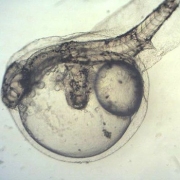Greg Paynter, soil health spokesperson from the Biological Farmers of Australia comments that there is the potential for continued use of endosulfan down under to impact
Endosulfan has a reputation for volatility and tends to be extremely subject to chemical drift. Its use in cotton crops was minimised because drifting spray was linked to the contamination of Australian meat in the past.
Biosafety scares - including unacceptably high residues of the pesticide found in local and imported Australian produce last year - reportedly played a part in New Zealand's decision to ban the chemical.
The persistency of the chemical in the environment has also raised health and eco-concerns.
According to Australian health authorities, endosulfan is highly toxic if sufficient exposure occurs by ingestion, skin contact, or inhalation. They say because endosulfan is not registered for use in or around the home, the public is most likely to be exposed via residues in food or through accidental exposure, including spray drift.
The Pesticide Action Network (PAN) in the United States which, with Australia, is in a minority of countries still allowing the chemicals use, say people living, working, and going to school near fields where the chemical is used can inhale chemical drift in contaminated air. Dr. Mariann Lloyd-Smith, the co-chairwoman of the International POPs (Persistent Organic Pollutant) Elimination Network, says endosulfan is a persistent organic pollutant.
"Endosulfan lingers in the environment and our bodies," she said. "Residues have been found in breast milk and placenta. It is toxic and travels the globe ending up in places far from where it was applied."
Mr. Paynter says it is also likely to linger in waterways as sediment residue.
According to PAN, waterways near application sites are particularly threatened, with concentrations of endosulfan downstream following a typical application to tomatoes, up to 28 times higher than the level fatal to the average freshwater fish. They say once released into the environment these residues take years to degrade, traveling many miles in the meanwhile.
Sunland Fish Hatchery owner, Gwen Gilson, who says she believes contaminated water from chemical spray drift from the macadamia plantation is to blame, continues that it's a case of putting two and two together... over two years ago, hatchery staff noticed that after the spray drifted over the ponds, the next batch of fish had convulsions.
Further implicating farm chemicals, workers at Sunland Fish Hatchery and individuals in the surrounding community have reported a ‘cancer hub' in the area.
Endosulfans use will also continue in India and China but a global ban could be enforced if the Stockholm Convention on Persistent Organic Pollutants (to which Australia is a signatory) considers elevating endosulfan to the final stage of assessment in October.

 Endosulfan is one chemical currently under investigation by the Queensland Department of Primary Industries and Fisheries as a possible cause of the hatching of a multitude of two-headed and chronically deformed fish at a hatchery next to a macadamia farm on the Sunshine Coast in Qld. The fungicide carbendazim is also being assessed.
Endosulfan is one chemical currently under investigation by the Queensland Department of Primary Industries and Fisheries as a possible cause of the hatching of a multitude of two-headed and chronically deformed fish at a hatchery next to a macadamia farm on the Sunshine Coast in Qld. The fungicide carbendazim is also being assessed.